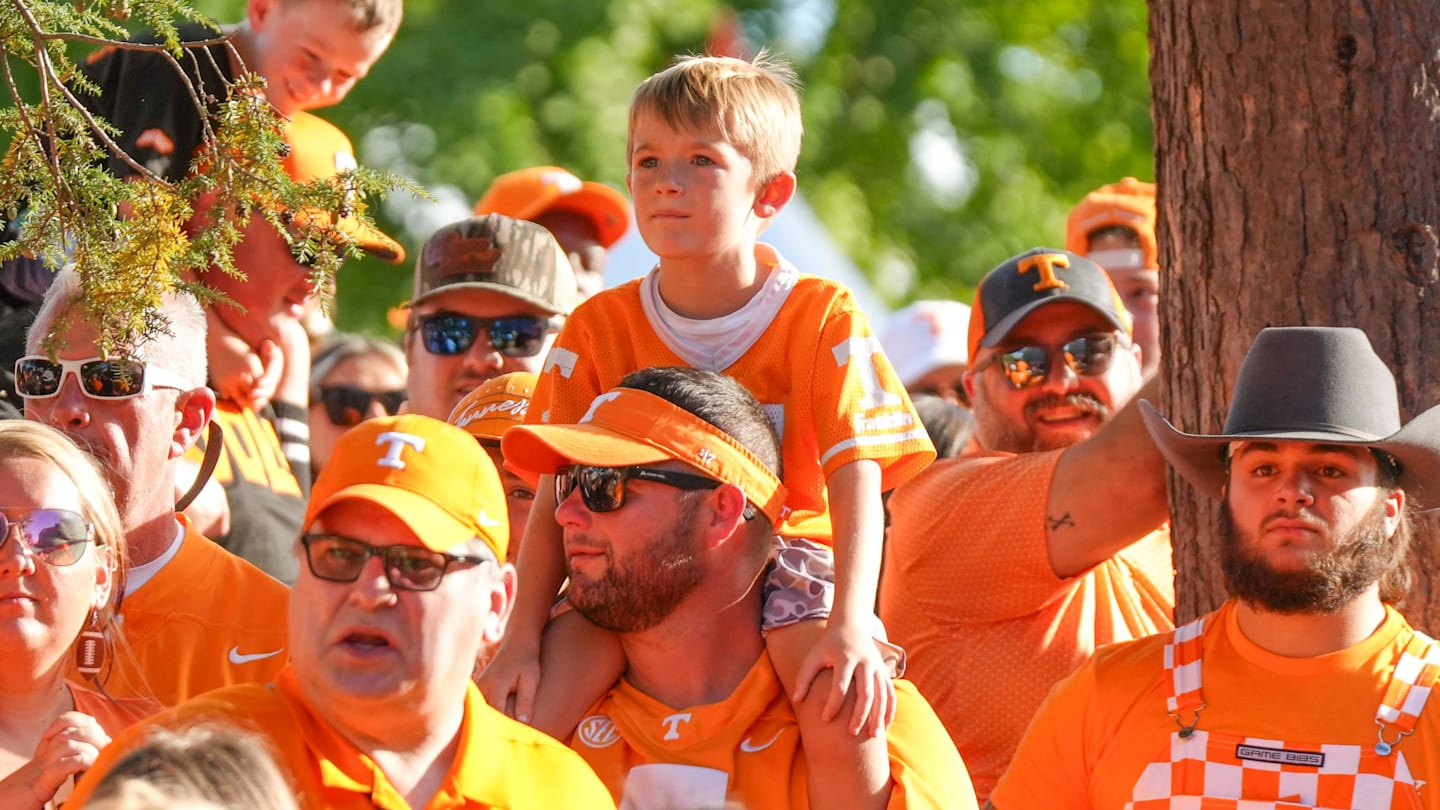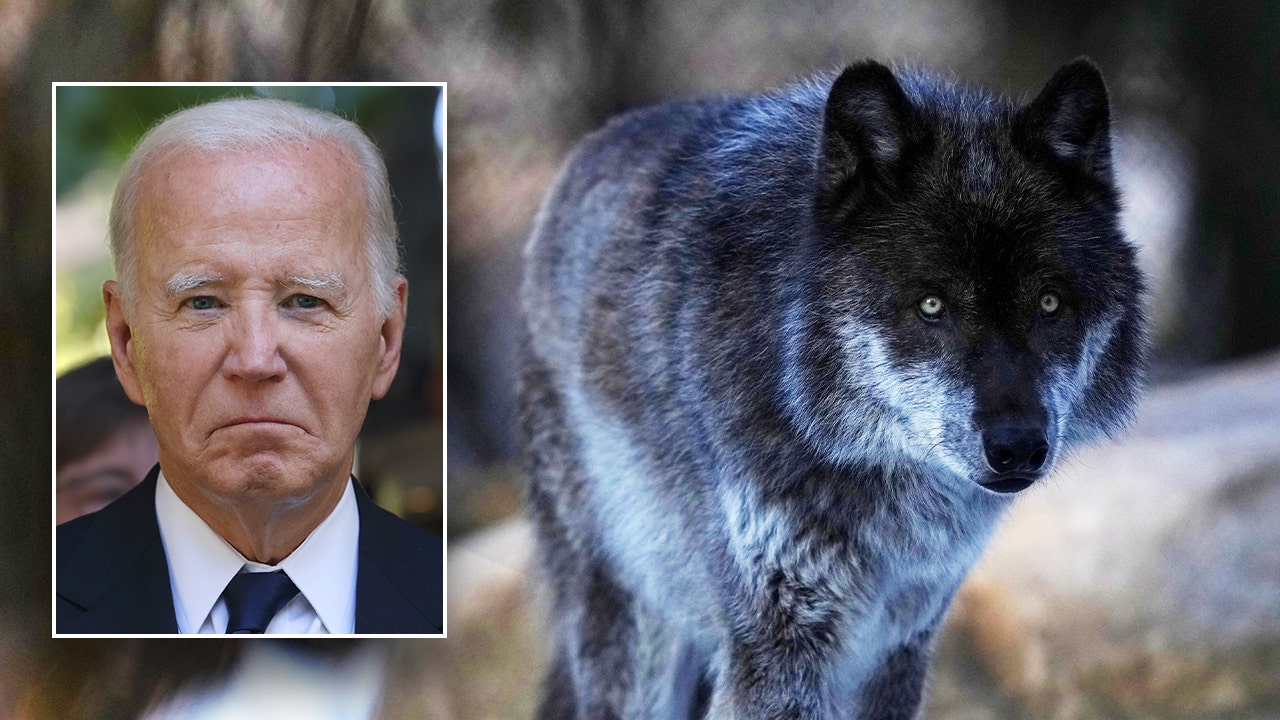West
New threat facing homeowners whose properties are featured online
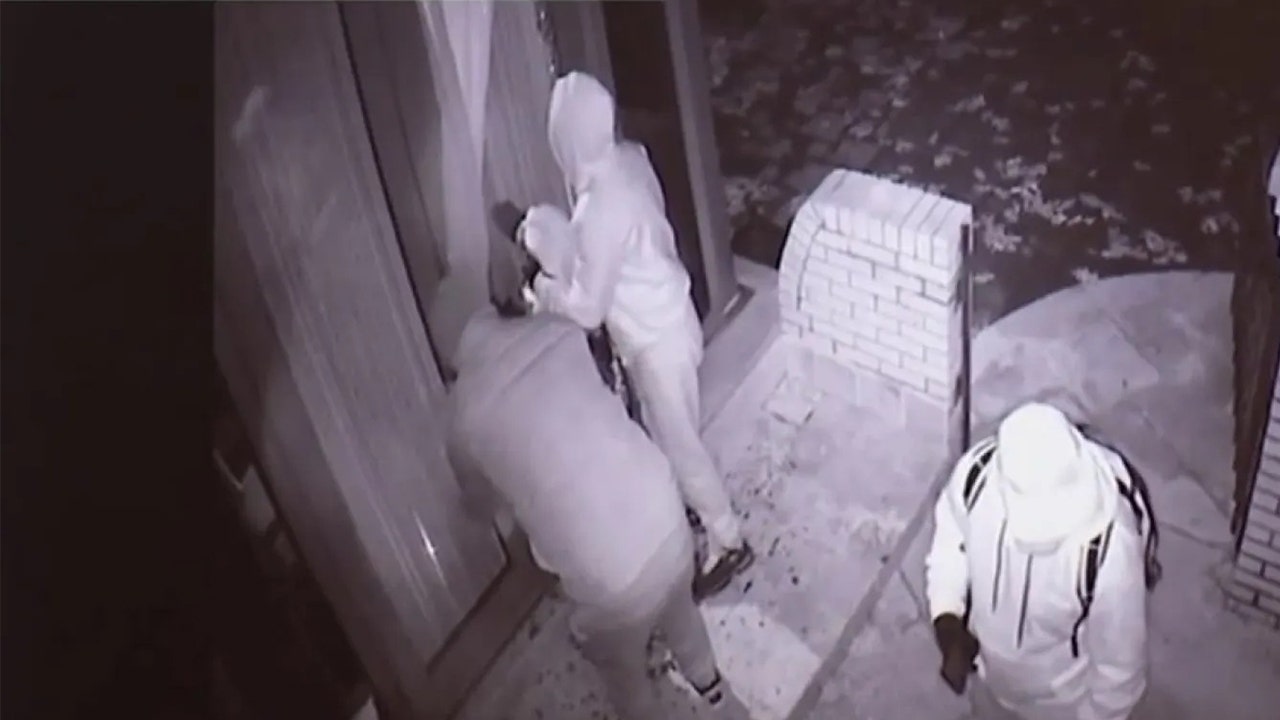
Burglars once lurked around neighborhoods and scanned obituaries to determine whom to target. Now, with free services easily available online, they can plan potential robberies from their computers or phones.
Although hard data on burglar’s methodologies is hard to come by, California’s Riverside Police Department has seen a number of criminals using these online means after they are arrested for prospective burglaries, or after completing one successfully.
The revelation comes as roving international crime gangs have victimized communities in California, Michigan and Arizona, according to Fox News Digital coverage earlier this year.
“Our detectives confiscate digital devices and things like that [after they arrest suspects] and we try to get search warrants to get into those devices,” Public Information Officer Ryan Railback told Fox News Digital. “That’s where you’re finding internet history. Our detectives have gone on their Google Maps and found that they’re searching certain addresses, that they were on Zillow or Redfin.”
Google shows high-definition aerial footage of 36 million square miles via Google Earth and Google Street View footage on 10 million miles of road worldwide, telling CNET that it has mapped out the streets in 98 percent of places where people live.
PROTECT YOUR PRIVACY: HOW TO REMOVE YOUR HOME’S PHOTOS FROM ZILLOW, REDFIN AND REALTOR.COM
Ring video shows burglars prowling in a victim’s backyard at night with flashlights.
Meanwhile, Zillow, one of the most popular real estate sites in the country, reported approximately 130 million listings in the U.S. as of July 2024. Sites like Zillow, Redfin and Realtor.com often show detailed interior photos of homes, and they stay on the website even after the home is sold in some cases.
“Right now you metaphorically case the joint out by going on these platforms with a cup of coffee in the comfort of your chair, and you gain more relevant data and intel than you ever did with [binoculars] and a vehicle outside the home,” former NYPD detective and security expert Pat Brosnan told Fox News Digital. “You really get the inside baseball.”
Brosnan said that prospective sellers can protect themselves by limiting what they include in their online home profiles.
“If you’re going to sell your home, of course you’re going to want to get your best foot forward,” he said. “The balance is to submit accurate, telling and professionally taken photos, but you don’t have to give a boatload. And I would always advise against doing a 360 video, really common with sales.”
‘BURGLARY TOURISM’ PLAGUES SOUTHERN CALIFORNIA AS UNVETTED FOREIGNERS RAID LUXE HOUSES

Sue Ellen Gutierrez Saez, 20, Johan Salvo Alacon, 21, and Manuel Eduardo Fuentes Gomez, 25, were arrested in Phoenix for allegedly committing an estimated 111 home burglaries as part of a South American criminal gang. (Maricopa County Sheriff’s Office )
Brosnan said that videos like these can be paused and enhanced, allowing criminals to “know every crack and crevice of the home, including windows, cameras and locking systems.”
“You can identify alarm systems and ways to get around them,” he said. “You can identify secondary and third points of entrance and egress.”
Sharon Polsky, president of the Privacy & Access Council of Canada, said that Google Maps imagery is also a useful tool for prospective car thieves.
“Car thieves can get a good idea of the type and number of vehicles at an address. A home with children’s toys scattered in the yard might be an unlikely place to get a high-end sports car; but a house with flags used as window coverings might be more likely to have an older vehicle — with lower value and therefore lesser criminal charges,” she told Fox News Digital.
“Anyone who steals cars to order can use Google Maps to see if a vehicle on their shopping list is in the driveways, and use that information to ensure they bring the appropriate software to be able to program blank key fobs needed to steal the vehicles,” Polsky said.
In listing photos on realty service websites, Brosnan suggested, avoid including photos of your security cameras, locks, security systems, gates, windows and doors whenever possible.
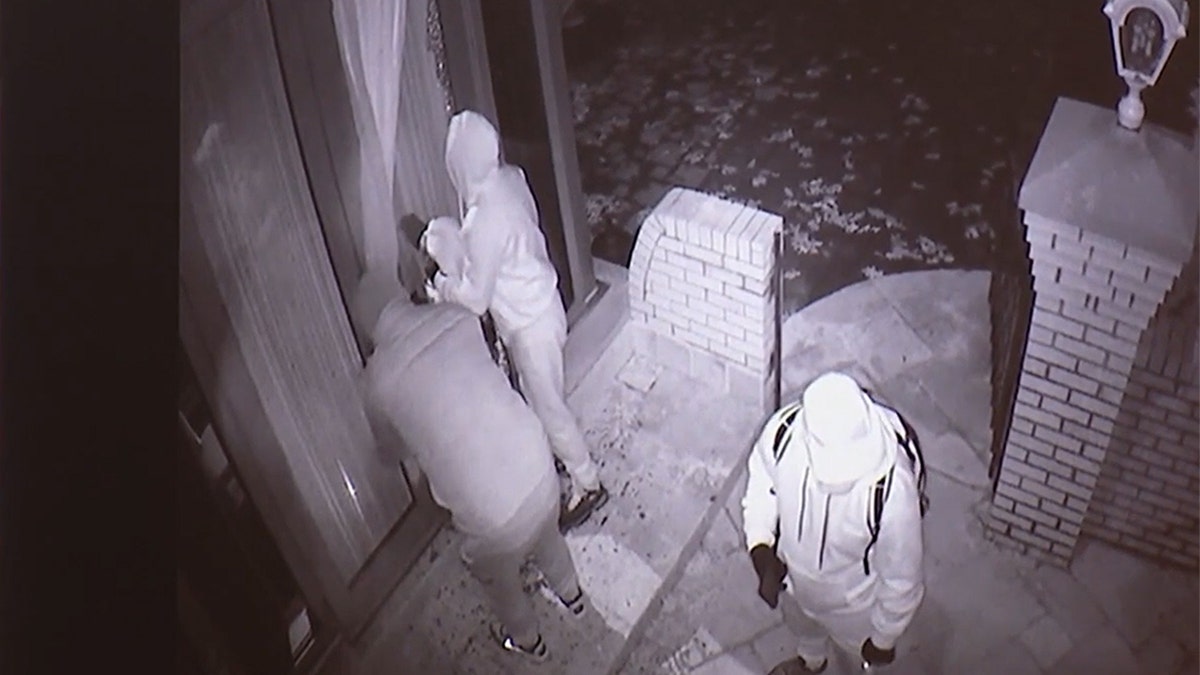
Members of a Chilean crime gang are pictured breaking into an upscale Oakland County home in Michigan. (WJBK)
He also advised against showing photos of the home at night that reveal where any motion-activated spotlights are located.
Former FBI agent and cybersecurity professional Bill Daly advised those selling their homes to make sure that any valuable furniture or artwork is stashed away before taking photos for a real estate listing.
Polsky said that when working with realtors, hopeful home sellers should “build it into the contract that the house number must not be revealed in the listing or photos.
“Doing that makes it only a bit less convenient for tire-kickers and potential renters/buyers who have to contact the realtor to get the address, giving the realtor an opportunity to talk to each person and build their own contact list). More importantly, not revealing the house number makes it a lot less convenient for thieves.”
GANG OF ILLEGAL IMMIGRANTS TARGET HIGH-END PHOENIX-AREA HOMES IN BURGLARIES, AUTHORITIES SAY
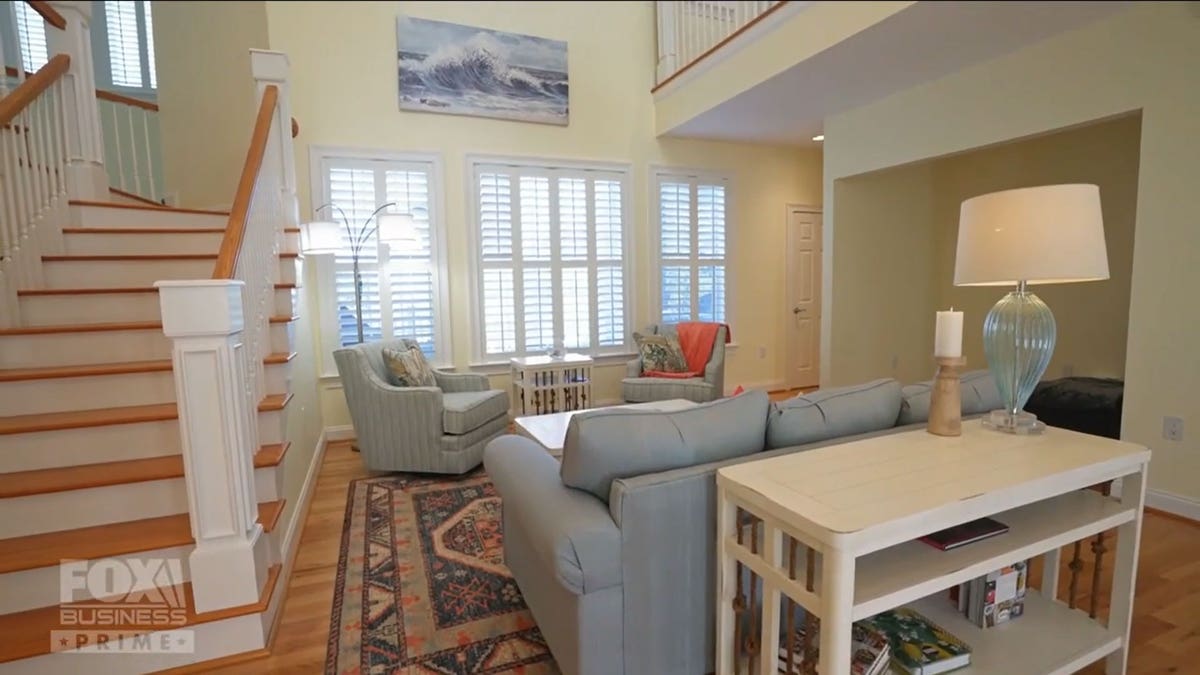
Photos on real estate websites can show entrance and egress points, camera locations and other elements that could help criminals hatch a plan to burglarize your home. (Fox News)
Railsback advised homeowners to put prominent security cameras and signage for alarm systems outside their homes, and to befriend their neighbors.
“If a criminal wants to get into my house, with all my safety measures, I want to make him at least think about the risk he may be taking,” Railsback said.
Brosnan also suggested having your home blurred on Google Maps Streetview, which can be done by finding your home on the service and clicking “Report a problem,” which gives you a short form to fill out.
A Google spokesperson told Fox News Digital that it generally takes their team about a week to blur out an address after a request, and that once an address has been blurred, the change is irreversible. The spokesperson noted that the company uses AI technology to blur license plate numbers and faces in Streetview images.
A Zillow representative also told Fox News Digital that their service makes it “quick and easy” to take ownership of home listings. The option can be accessed by finding your home on the site and clicking “More options,” which reveals the “Claim ownership” function. After proving that they own the home in question, homeowners can remove photos or the entire listing.
“We take privacy and security very seriously,” the spokesperson said. “The photos on Zillow come from sources like the multiple listing service that real estate agents use to market homes for sale. We always encourage homeowners to claim their home on Zillow, which allows them to change or remove photos and edit their home facts.”
ELITE MIGRANT CRIME RING TARGETING MICHIGAN HOMEOWNERS ON SPRING BREAK: SHERIFF
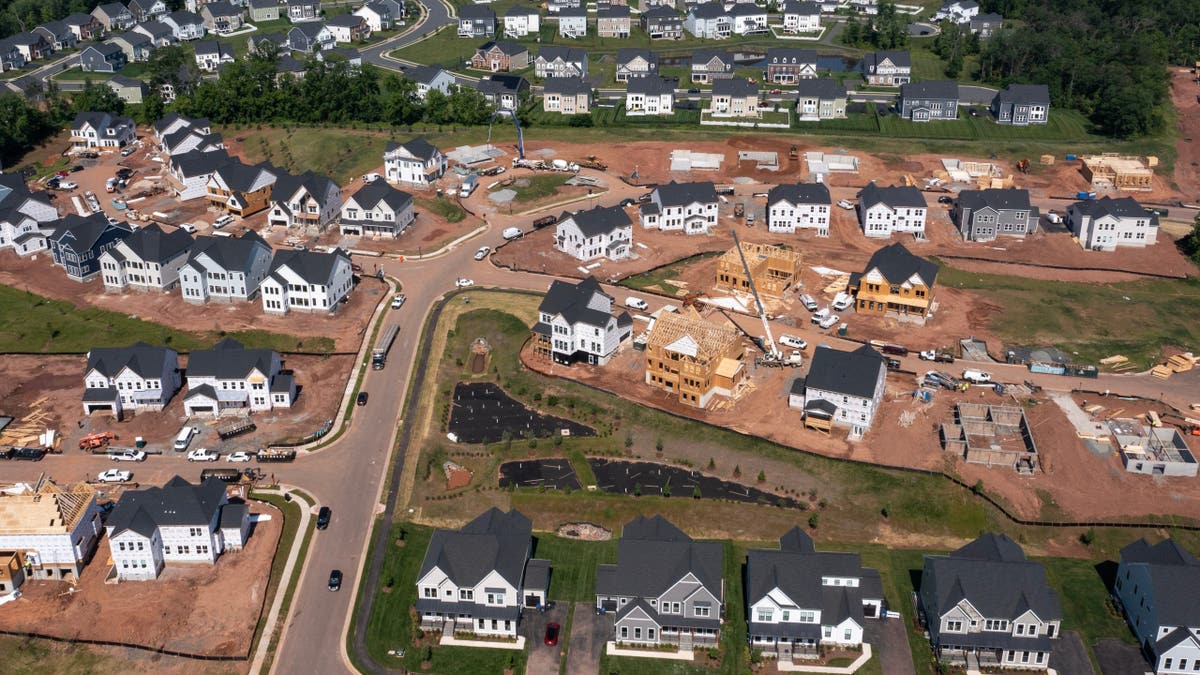
Single-family homes in a residential neighborhood in Aldie, Virginia, on Wednesday, May 22, 2024. (Nathan Howard/Bloomberg via Getty Images)
Redfin, Realtor.com and Google could not be reached for comment at press time.
Brosnan said it is also important to limit what you post online about your own whereabouts.
“Unless your social media is very private, and your followers are those that you personally know and trust, don’t post about your vacation on social media,” he said. “If I see anyone on social media, and they’re on vacation in Mexico somewhere, where are they not?
“You have to look at your settings every so often – these platforms update their settings,” he continued. “Update your settings, keep them updated, and ask your close friends or neighbors to drive by your house or give them access to your cameras when you are away. Don’t advertise when you’re not home.”
Those who must upload their vacation photos online, he said, should wait until they’ve returned home to post.
Read the full article from Here

Utah
Utah's resorts receive 1st snow of the season. What does it mean for this winter?
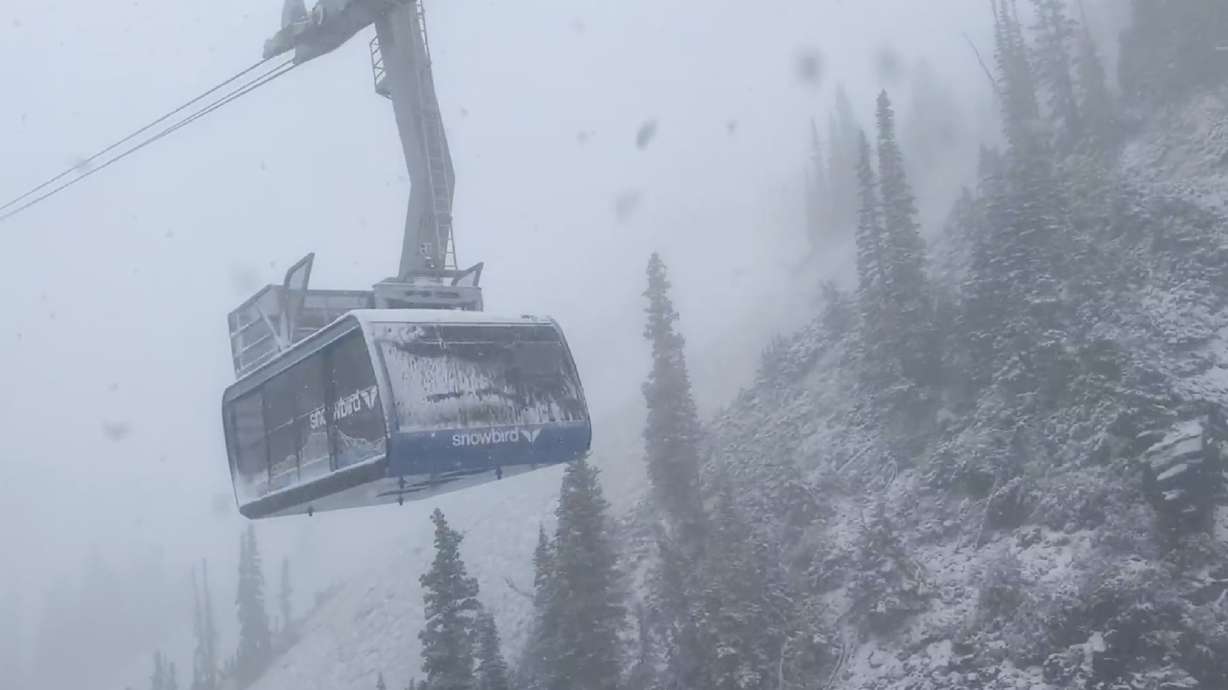
LITTLE COTTONWOOD CANYON — Utah’s first snow of the season has indeed arrived.
“Woot. Let’s hope the first layers go down solid,” wrote one ski enthusiast in response to social media posts about this first snow, summarizing most of the reaction from the skiing and snowboarding community.
KSL meteorologist Matt Johnson said the snow line ended up about where it was projected, impacting many mountain areas at 9,000 feet elevation or higher, including mountains in southern Utah, like Eagle Point Resort in Beaver.
When snow typically returns
For instance, the first snow in Utah’s mountains two years ago came on Sept. 16.
Mountain communities like Alta typically receive about 2.7 inches of snow in September, based on National Weather Service data dating back to 2000. During that span, there were times it never snowed in September, but in several instances, at least a trace of snow fell in early to mid-September.
Utah’s high elevations once received a trace of snow as early as Aug. 10 in 2003, and, in 2006, Alta received 11 inches of snow from a Sept. 16 storm.
The National Weather Service has tracked Salt Lake City weather data since 1874. Nov. 8 is the average first snowfall date over that time, representing about the first time snow typically returns to the valleys.
But Tuesday also marks the 59th anniversary Alta received its earliest first snowfall on record. A little over 2 inches of snow fell within Utah’s capital from a storm on Sept. 17, 1965.
What does it mean for this winter?
An early first snowfall date doesn’t mean anything about what type of winter Utah will have.
“This does not have any correlation to what kind of snow season we’re looking at,” Johnson said. “Nonetheless, nice to see the snow this early.”
It’s still very unclear what type of winter Utah will have after the state ended up with back-to-back above-normal snowpack collections the past two winters.
The National Weather Service’s Climate Prediction projects a La Niña oceanic pattern will return this winter, which doesn’t mean much in terms of Utah’s long-range forecast. La Niña generally produces wetter conditions in the Pacific Northwest and drier conditions in the Southwest, but Utah is typically caught in between with varying levels of precipitation success.
For example, its last La Niña winter produced a record-breaking 30-inch snowpack. The two years before that were also La Niña winters, where the state topped out at 12.1 and 12 inches of snow water equivalent, respectively — about 4 inches below the median statewide peak.
The center’s early season projections list most of Utah as having slightly greater odds for below-normal precipitation this winter, while northern Utah is listed as having “equal chances.” This means there’s no clear signal whether wetter, drier, or near-normal conditions will emerge between Dec. 1 of this year and Feb. 28, 2025.
It isn’t the agency’s final winter projection, though, which is typically expected by mid-November.
Washington
Design of D.C. Memorial for Slain Journalists Is Unveiled
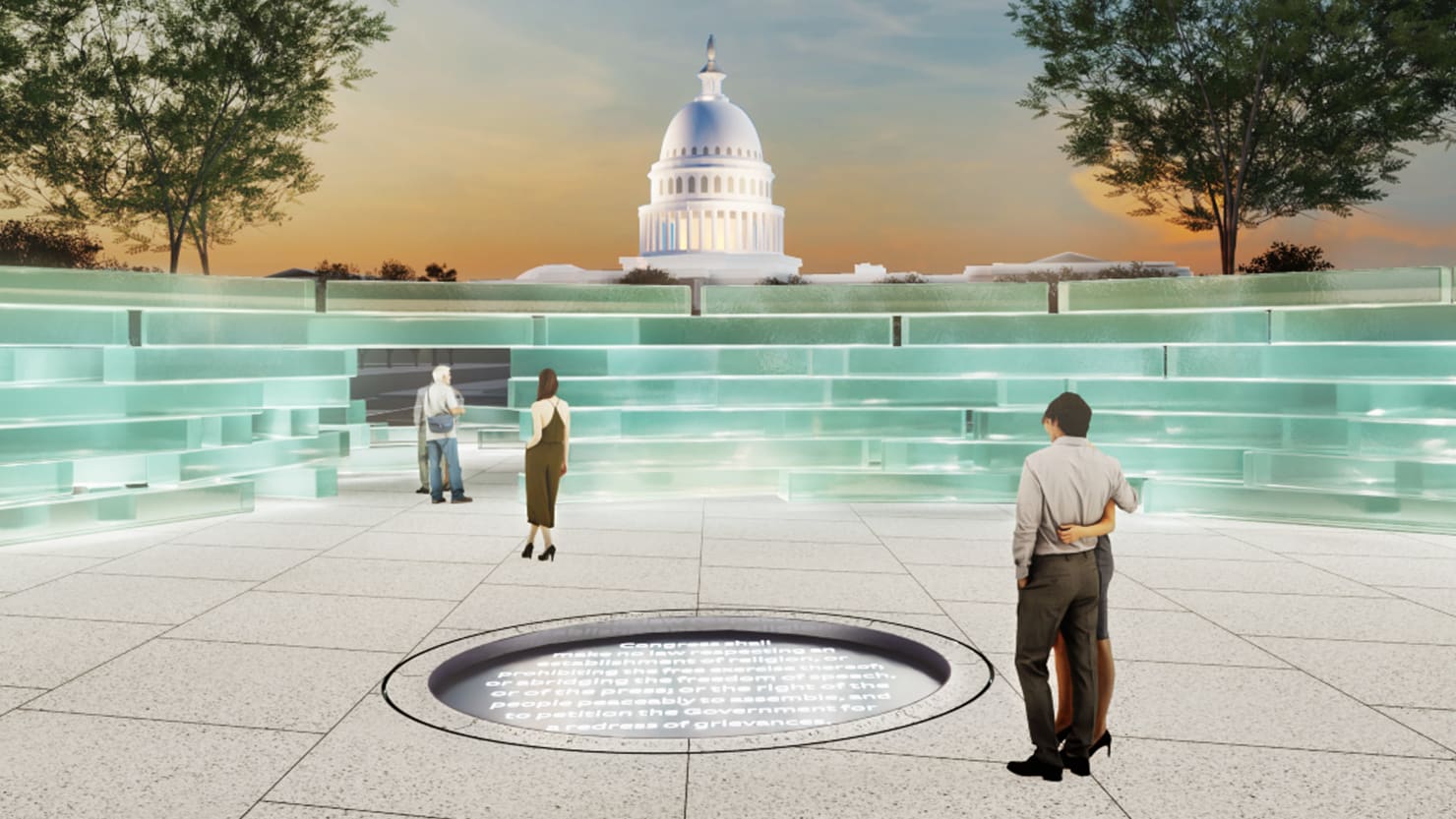
The Fallen Journalists Memorial Foundation has unveiled its design on Monday for a National Mall monument honoring journalists killed in their line of duty, representing the first memorial for slain journalists on federal grounds.
The Washington D.C. monument, projected to open in 2028, is made up of various cast glass blocks that form a path to the memorial’s center, which culminates in a cylindrical space that includes the text of the First Amendment. The purpose, architect John Ronan said, was to mimic both the transparency journalism provides and the disparate parts that make up a complete story.
“It’s a journey of discovery that unfolds slowly, space by space, like a journalist’s story unfolds line by line,” Ronan told The Daily Beast. “The idea is to cast the visitor in the role of an investigative journalist, pursuing truth wherever it leads.”
Artist renderings of the Fallen Journalist Memorial in Washington, D.C.
Fallen Journalists Memorial Foundation/John Ronan Architects
The design was completed by Ronan’s Chicago-based firm, which was selected earlier this year after a yearlong process led by Pulitzer-Prize winning architecture critic Paul Goldberger. The design will be presented to the U.S. Commission on Fine Arts on Thursday for review, and the National Capital Planning Commission will review it next month.
The love for journalism is reflected through each element of the memorial’s open-air design. Ronan incorporated a classroom space for planned programming on the importance of journalism, and there will be a space reserved for broadcast journalists to do their live shots. Many of the glass slabs will also include quotes related to journalism or said by journalists themselves.
Even the memorial’s location—situated on one-third of an acre between Independence and Maryland avenues and Third Street SW with a direct view of the U.S. Capitol dome—is meant to reflect how journalism is interwoven into U.S. history.
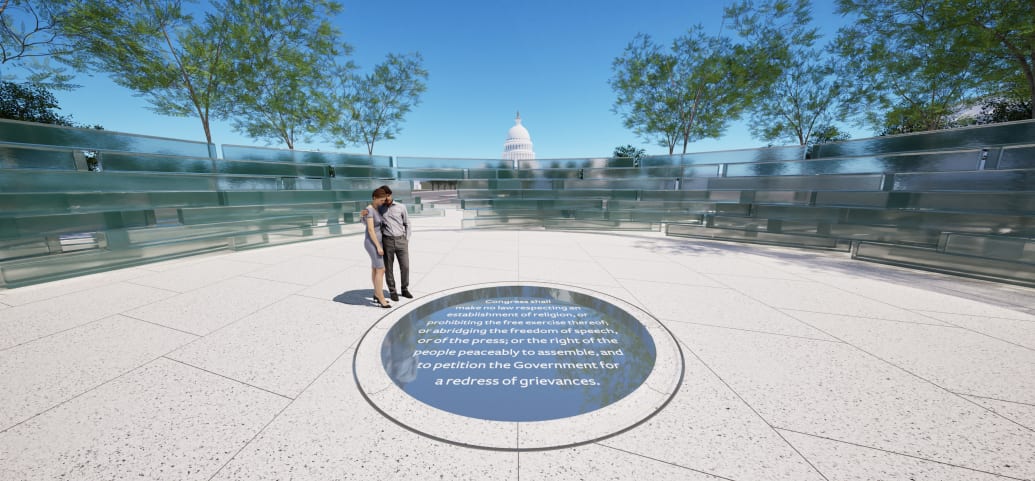
Artist renderings of the Fallen Journalist Memorial in Washington, D.C.
Fallen Journalists Memorial Foundation/John Ronan Architects
The road to getting the memorial going was almost miraculous amid the hyperpartisanship—and sunken trust in the media—begetting the U.S. The Fallen Journalists Memorial Foundation was formed in June 2019 by former U.S. representative and ex-Tribune Broadcasting Company CEO David Dreier, a Republican, to celebrate the journalists who were killed at the Capital Gazette newsroom in Maryland in 2018.
The foundation was memorialized by Congress in 2020 after it passed a bill letting the group build a memorial on federal lands—though it cannot receive federal funds. President Donald Trump signed the bill into law in December 2020.
It’s that bipartisan spirit, foundation president Barbara Cochran said, that emphasizes the memorial’s importance and its place on federal land.
“These stories, I think, underscore both the important job that journalists are doing and the risks that they face,” Cochran said. “You know, it’s not just in war zones, or covering corruption, covering autocrats and authoritarian regimes, and even just covering their community news in a place like Annapolis, Maryland, where journalists can encounter danger. So I think that those stories really resonate with people.”
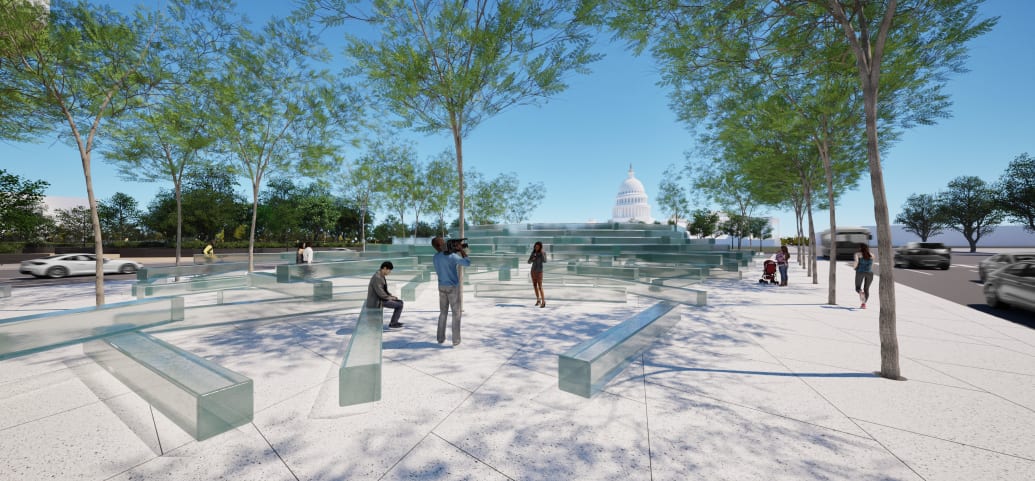
Artist renderings of the Fallen Journalist Memorial in Washington, D.C.
Fallen Journalists Memorial Foundation/John Ronan Architects
Still, even those noble ideas can still risk inducing partisan attacks. GOP politicians have assailed U.S. journalists over their coverage of the 2024 presidential election, with lawmakers like Sen. Ted Cruz and Rep. Marjorie Taylor Greene resorting to dubious documents to attack ABC over their debate.
One of their safeguards, Cochran said, is their advisory board. The group is composed of reporters and editors from a wide swath of publications, including everyone from former New York Times and Washington Post executive editors Dean Baquet and Marty Baron to Fox News anchor Bret Baier to Newsmax CEO Christopher Ruddy.
“When I asked people to be on the board of advisors, it was an immediate yes in almost all instances,” Cochran said.”I think journalists especially are acutely aware of the dangers and the threats, and they recognized immediately how important it is to have this.”
It’s why such fears of partisan attacks don’t worry Cochran as much.
“There will always be criticism of individual journalists, individual news organizations,” Cochran said, but she cited Thomas Jefferson’s love for newspapers as an example of press rising above partisanship.
“He preferred a society with free journalism, with free press,” she said. “And I think officials really do feel that.”
(Note: The Daily Beast’s Chief Content Officer Joanna Coles is on the foundation’s board of advisers.)
Wyoming
Mountain West senators urge feds to protect wilderness rock climbing
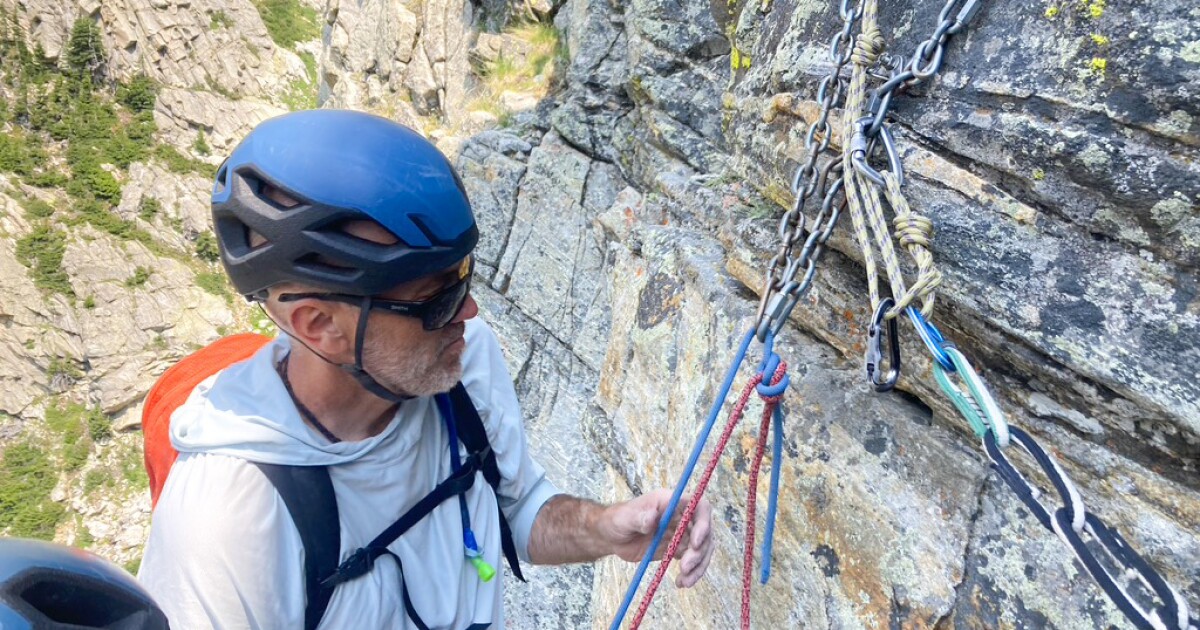
More than a dozen U.S. senators are urging the National Park and Forest services to reconsider plans to restrict the use of fixed anchors for rock climbing.
“We are concerned the policy changes would unnecessarily burden our National Parks’ and Forests’ already strained budgets, limit access to these special places, and endanger climbers,” the senators recently wrote in a letter.
The group represents Wyoming, Colorado, Nevada, Utah, Idaho and four other states, and says they’re concerned that climbing access could be limited in places such as Utah’s Zion National Park or Wyoming’s Wind River Range.
Climbers have historically used fixed anchors — or metal bolts drilled into rock walls — to rappel down hundreds of feet.
But last fall, the National Park Service and U.S. Forest Service proposed restricting them in wilderness areas and potentially removing many existing anchors.
While some conservationists support this, arguing anchors can damage rock faces, there was mass pushback from climbers, recreationists, and now, senators.
“The recreation economy is so significant in most Western states, especially, but also across the country,” said Erik Murdock, deputy director of the Access Fund, the climbing advocacy group that has been at the forefront of this fight.
He said removing anchors from some 50,000 wilderness climbing routes is untenable and just plain expensive. Plus, he said if fixed anchors go, so could other types of recreation, like backcountry skiing.
“It’s an example of how natural resource policy can go awry if bureaucrats are not considering the general public, stakeholder groups, local economies, long-standing traditions and uses of wilderness,” Murdock said.
The senators are calling for a new policy that continues to allow fixed anchors, which they called “fundamental safety tools” for climbers. They also called for a “timely briefing” on the status of the proposed policy to manage climbing.
The federal agencies have not released any major updates on their plans since receiving thousands of comments in opposition earlier this year.
This story was produced by the Mountain West News Bureau, a collaboration between Wyoming Public Media, Nevada Public Radio, Boise State Public Radio in Idaho, KUNR in Nevada, KUNC in Colorado and KANW in New Mexico, with support from affiliate stations across the region. Funding for the Mountain West News Bureau is provided in part by the Corporation for Public Broadcasting.
-

 News1 week ago
News1 week agoCross-Tabs: September 2024 Times/Siena Poll of the Likely Electorate
-

 Politics1 week ago
Politics1 week agoHarris visits spice shop known for hating and slamming Republicans, calls for end of 'divisiveness'
-

 World1 week ago
World1 week agoResearchers warn methane emissions ‘rising faster than ever’
-

 Politics1 week ago
Politics1 week agoHouse honoring 13 US service members killed in 2021 Abbey Gate bombing during Afghanistan withdrawal
-

 Politics1 week ago
Politics1 week agoKamala Harris' new climate director said she is hesitant to have children because of climate change threats
-
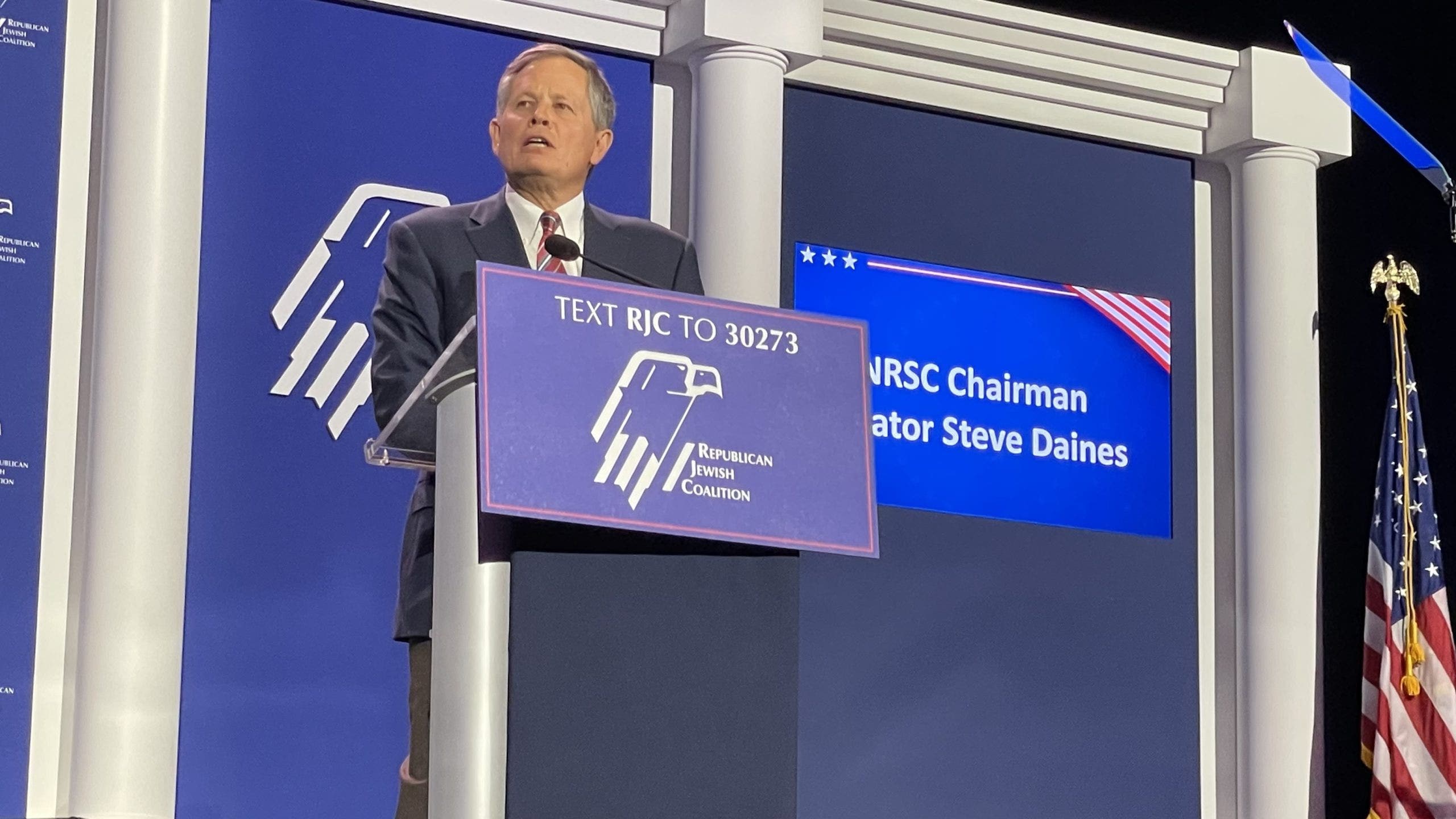
 Politics1 week ago
Politics1 week agoBold prediction: What the Senate GOP campaign chair says about winning back the majority
-

 World1 week ago
World1 week agoParis Paralympics set records
-

 World1 week ago
World1 week agoEU weighs 'strong' response to Iran's missile deliveries to Russia



